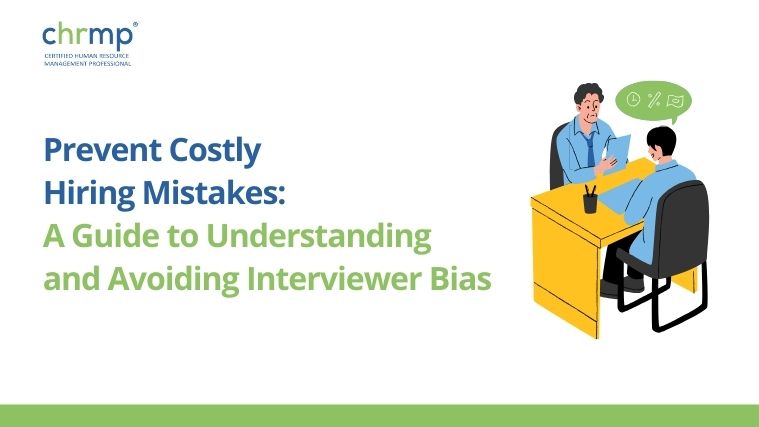

Addressing issues of misconduct or poor performance in the workplace is an uncomfortable affair, but it ultimately benefits everyone involved when the correct actions are taken against it.
In this blog, we shall take a proactive and positive approach to address behaviour that falls short of expectations and also discusses some practices that help develop a culture of accountability that fosters growth and development.
We shall explore the definition, importance, types, best practices, and the kind of behaviour that warrants disciplinary actions.
So without further ado, let’s dive right in and learn how to handle disciplinary action with confidence and optimism!
Disciplinary action is a formal process of addressing behaviour that falls short of expectations or more serious issues like misconduct and harassment. It is an important tool managers use to ensure that employees meet the standards and expectations of the organisation and correct disruptive or harmful behaviour in the work environment.
There are several types of actions and several kinds of behaviour that warrant disciplinary action.
The ultimate goal of disciplinary action is to encourage positive behaviour among employees and promote a culture of accountability and professionalism in the workplace by addressing negative behaviour.
Disciplinary actions are important in the workplace as they help managers address and curb unacceptable behaviour and maintain a productive and professional workplace.
It allows managers to uphold the expectations and standards required by the company to achieve business success.
These actions also help managers prevent further negative impacts on the work environment and other employees while promoting accountability and professional culture in the workplace.
Disciplinary action is crucial in ensuring that employees meet expectations and contribute to the company’s success.
Managers can take several different actions against misbehaving employees depending on the severity of the misconduct and company policies and procedures.
That being said, here are the five most common types of disciplinary actions seen in the workplace:
1. Verbal Warnings: This type of action usually involves a manager or supervisor discussing unacceptable behaviour with the employee in an informal meeting. Misconduct is addressed, and expectations for future conduct are outlined.
2. Warnings in writing: This is a formal approach to taking disciplinary actions against employee misconduct. The employee is sent a written warning via email or letter where the unacceptable behaviour is documented, and the employee is warned about the consequences of future misbehaviour.
3. Suspension: This is a rather strict action where the employee is removed from the workplace for a specific period of time, either with or without pay, as a consequence of their misconduct.
4. Demotion: In this type, an employee is shifted to a lower rank or position from their initial designation within the company as a result of their misconduct.
5. Termination: This is the most stringent type of disciplinary action and is only taken against employees whose misconduct is extremely unacceptable. This type of behaviour may include harassment, dishonesty or other unforgivable behaviour. As a consequence of their action, the employee is fired from their position.
Disciplinary action in the workplace refers to any measures taken by an employer to address and correct an employee’s behaviour that violates company policies, workplace rules, or performance expectations.
This can include verbal or written warnings, suspension, demotion, or termination. Disciplinary action in the workplace varies depending on the policies and procedures of the company, but generally, the following types of behaviour can warrant disciplinary action:
1.Violation of company policies:
When an employee violates any of the policies and procedures of the company, it warrants disciplinary action. For example, an employee who engages in harassment, discrimination, or theft would be subject to action. Companies have specific policies in place for such behaviours, like a code of conduct or a policy on employee misbehaviour.
2. Poor performance:
Performance standards have to be met irrespective of position, role or gender. Failing to meet usually warrants disciplinary action. Actions such as not completing work on time or not achieving the required level of quality usually warrant disciplinary action. Performance standards should be clearly communicated to employees, and employers should have a performance improvement plan in place to help employees who are struggling to meet the expectations of the organisation.
3. Absenteeism:
Chronic absences or lateness can be disruptive to daily processes at the workplace and cause delays or missed deadlines. There are organisational policies in place regarding attendance and tardiness, and employees who violate these policies may be subject to disciplinary action.
4. Safety violations:
Behaviour that endangers the safety of oneself or others can be categorised as a safety violation and result in disciplinary action. This includes not wearing personal protective equipment, operating equipment improperly, or not following safety protocols. Employers have a responsibility to maintain a safe work environment and may take disciplinary action to ensure that employees follow safety guidelines.
5. Misconduct:
This includes a wide range of unacceptable behaviour, such as bullying, insubordination, harassment, to dishonesty. Employers usually have clear policies in place outlining what constitutes misconduct, and employees who engage in misconduct may be subject to disciplinary action.
The severity of the behaviour and the potential impact on the workplace will determine the type and level of action taken. A fair and consistent disciplinary process should be in place, taking into account any mitigating circumstances at the same time, providing opportunities for employees to improve their behaviour.
Below are listed ten best practices for creating a disciplinary action policy in the workplace:
Disciplinary action policy should be clearly written and easily accessible to all employees. It should outline what behaviour is expected, what behaviour is prohibited, and the consequences for engaging in such behaviour which violates the policy.
All employees should understand the disciplinary policy and its importance. Meetings should be held, or training sessions be conducted to ensure that everyone is aware of the expectations and consequences of violating those expectations.
Ensure that the action is applied consistently to all employees, regardless of position or tenure. Any discrepancies can lead to confusion and damage morale.
The disciplinary process should be fair and unbiased. Any actions taken should be based on the facts of the situation and not personal biases or opinions.
Employees should be provided with a fair and reasonable opportunity to respond to any allegations and present their side of the story.
A progressive disciplinary process should be in place, i.e., start with less severe consequences, such as verbal or written warnings, and escalate to more severe ones, such as suspension or termination, if necessary.
If performance standards are not being met by an employee, a plan to improve their performance before taking any action should be provided by the management.
Documentation of all actions taken, including warnings, discussions, and any other relevant information, is required. This can be important in case of legal action.
Supervisors and managers should be trained to recognise and respond appropriately to behaviour that warrants action. They should be in the know as to how to document incidents and escalate issues to HR when necessary.
Regular review of the disciplinary action policy to ensure it stays effective and up-to-date. Revision of the policy, as and when necessary, to reflect changes in the workplace or legal requirements.
An employee should be able to appeal the action if they believe it was unfair or unjustified. Employers should have a process in place for employees to appeal disciplinary action, which should be clearly communicated to employees.
Employers should also have clear policies and guidelines in place for termination and should ensure that any disciplinary action or termination is based on the facts of the situation and not personal biases or opinions.
Employers can create an action policy that is fair, consistent, and effective in maintaining a productive and professional work environment by following these policies and practices.
1. What is disciplinary action in the workplace?
Disciplinary action in the workplace refers to any measures taken by an employer to address and correct an employee’s behaviour that violates company policies, workplace rules, or performance expectations. This can include verbal or written warnings, suspension, demotion, or termination.
2. What kind of behaviour can result in disciplinary action?
Any behaviour that violates company policies or expectations can result in disciplinary action. This can include poor performance, absenteeism, safety violations, harassment, discrimination, misconduct, and other unacceptable behaviours.
3. What is the purpose of disciplinary action?
The purpose of disciplinary action is to correct unacceptable behaviour and help employees understand the consequences of their actions. It also serves to maintain employee productivity and a professional work environment and protect the company from liability.
4. What should an employer do before taking disciplinary action?
Before taking disciplinary action, an employer should investigate the situation, gather all relevant facts, and give the employee an opportunity to respond to any allegations. They should also follow a fair and consistent disciplinary process and ensure that any action taken is based on the facts of the situation and not personal biases or opinions.
5. Can an employee appeal disciplinary action?
Yes, an employee can appeal disciplinary action if they believe it was unfair or unjustified. Employers should have a process in place for employees to appeal disciplinary action, which should be clearly communicated to employees.
6. Can an employee be fired for any reason?
In most cases, an employee can be fired for any reason as long as it is not discriminatory or illegal. However, employers should have clear policies and guidelines in place for termination and should ensure that any disciplinary action or termination is based on the facts of the situation and not personal biases or opinions.
To conclude, disciplinary action is an important tool for maintaining a productive and professional work environment and safeguarding the organisation against rogue practices.
By establishing clear policies, communicating expectations to employees, and following a fair and consistent disciplinary process, employers can correct unacceptable behaviour and protect their company from liability.
Employers should also strive to create a workplace culture that encourages positive behaviour and performance and provide employees with the tools and support they need to succeed.
By implementing these practices, employers can create a fair, effective, and productive disciplinary action policy that benefits everyone involved and safeguards the organisation from rogue practices from unruly individuals.

Fill in the below details to get a CHRMP HR Generalist Program Plan.
